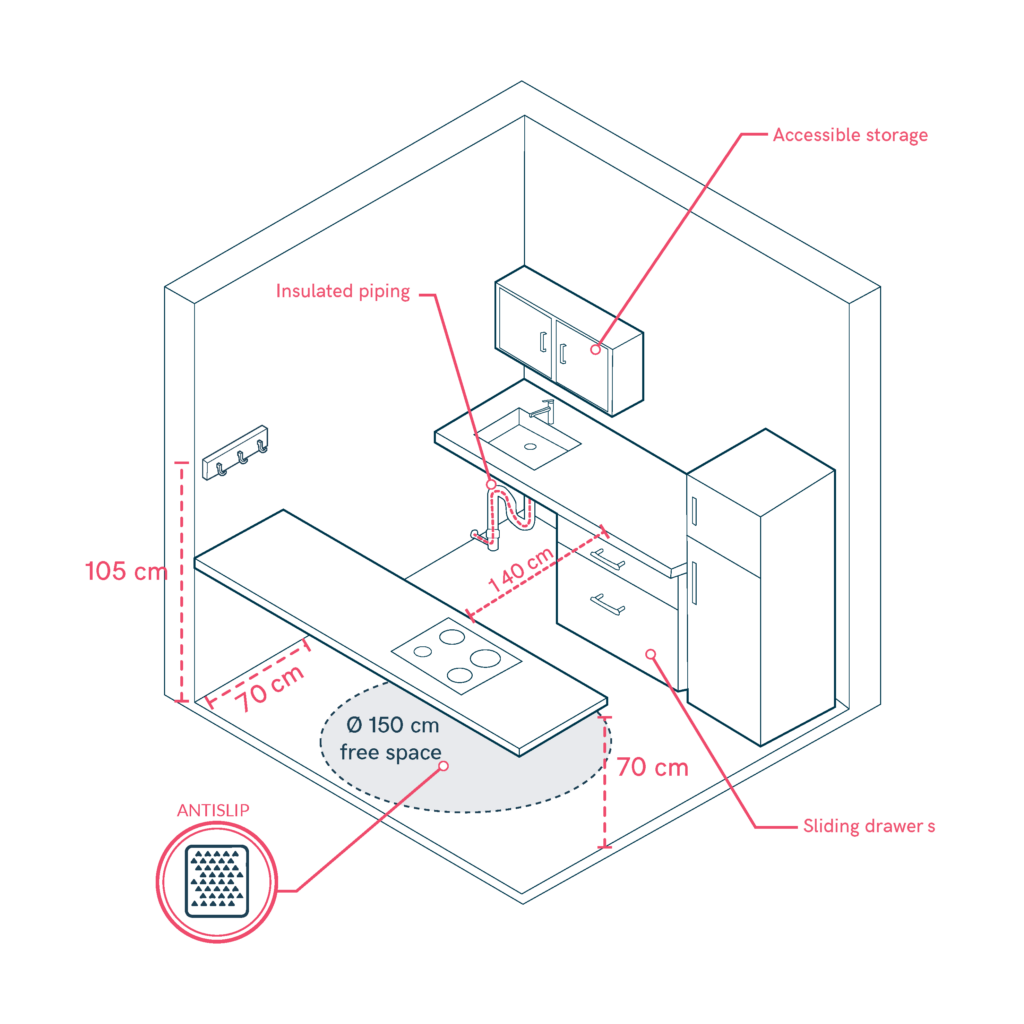Accessible and Ergonomic Kitchen
The kitchen is a key space in the home, so its design must ensure accessibility and safety for everyone, regardless of mobility or height. This requires height-adjustable surfaces, ergonomic storage, and easy-to-use taps. Additionally, the use of non-slip materials and insulated piping helps prevent accidents, making the kitchen a safer and more efficient space.

- Install height-adjustable worktops to accommodate wheelchair users and people of different heights.
- Design accessible storage with sliding drawers, shelves at appropriate heights, and built-in appliances at an ergonomic level.
- Fit lever-operated or sensor taps for ease of use by individuals with reduced mobility.
- Incorporate insulated piping in sinks to prevent accidental burns.
- Use non-slip flooring to prevent falls.
- Design a kitchen that is easy to keep clean and organised.
- Carers
- Children
- Cognitive
- Cognitive abilities
- Decolonial perspective
- Digital
- Digital barrier
- Enviroment
- Environmental
- Gender and generations
- Gender perspective
- Hearing impairment
- Low-education
- Low-income
- Older people
- Other
- Physical abilities and features
- Sensory and Physical
- Socioeconomic
- Visual impairment